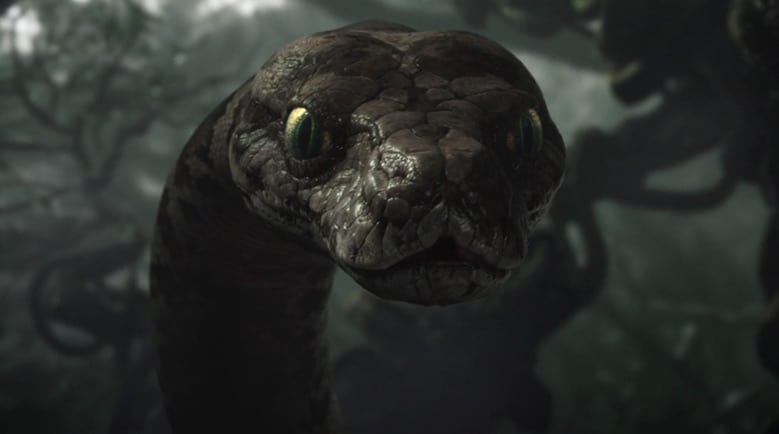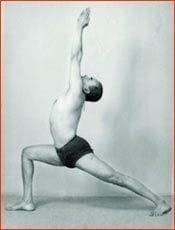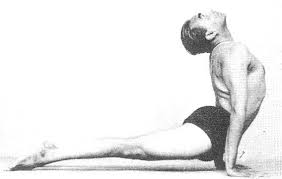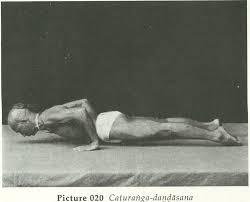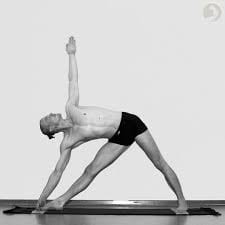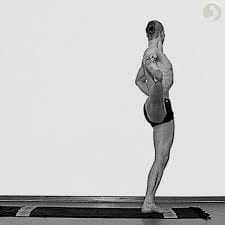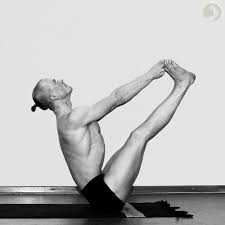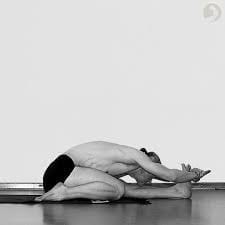Photo Credit: Jungle of the Book (the movie) Drishti is a Sanskrit word that means gaze of focus. It is directly connected with the 5th limb of Yoga Pratyara, the Withdrawal of the Senses as well with the 6th limb of Yoga Dharana which is the Concentration. Each Asana has its own Drishti. There are 9 Drishtis. 1. Anghustamadye : « Anghusta » Thumb – « Madye » middle. Means the middle of the thumb. It is practiced during Virabhadrasana I.
2. Bhrumadye : « Bhruma » Eyebrows – « Madye » Middle. Means the middle of the eyebrows. Also known as the third eyes. It stimulates the olfactory and optic nerves, consequently awakening the autonomic and central nervous system (Source Wikipedia). For instance in Urdhva Mukha Svanasana.
3. Nasagre : « Nasagre » tip of the nose. Strengthens the eye muscle. Practiced in Chaturanga Dandasana.
4. Hastagrahe : « Hasta » Hand. Tips of the hand, easily understood while practicing Uttitha Trikonasana.
5 and 6. Parshva : « Parshva » means Side in Sanskrit. Therefore we should talk about right and left side. Most common used in twisting position or in Uttitha Padanghustasana B also known as Uttitha Parshvasahita.
7. Urdhva : « Urdhva » means rising or above. It is sometimes used instead of Bhrumadye the 3rd eye. The Urdhva Drishti brings the attention up to a particular point. It is practiced with Ubhaya Padanghustasana.
8. Nhabicakre : « Nhabi » means navel, center or origin. The second part of it is « Cakre » or best known with « Chakra » meaning wheel. This drishti is full of signification, it brings us to a more internal practice. We bring our awareness to our center inside our inner being, a complete immersion in ourself, a full introspection. It is practice in Adho Mukha Svanasana. Knowing the real meaning of this dristhi brings more attention to the posture. 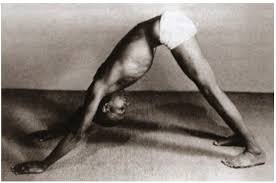 9. Padayoragre. « Pada » in sanskrit means foot. With this drishti the intention is toward the tips of the feet or the toes also between the big toe and the second toe for Paschimotanasana B. It is the main drishti for most of the forward fold such as Tryanga Mukha Eka Pada Paschimottanasana or Janu Shirshasana.
9. Padayoragre. « Pada » in sanskrit means foot. With this drishti the intention is toward the tips of the feet or the toes also between the big toe and the second toe for Paschimotanasana B. It is the main drishti for most of the forward fold such as Tryanga Mukha Eka Pada Paschimottanasana or Janu Shirshasana.
We can change the Dristhis from one asana to another one. For instance in a forward fold such as Janu Shirshasana we can choose to gaze at our tip of the nose. The main goal of the Dristhi is to keep the mind calm and steady on one particular point in order to practice Pratyara and Dharana. Also it will avoid the practitioner to look at others yoga mats, what is happening at the window or check the nail polish. Drishti bring the practitioner into an awaken practice, being present in the moment, in our body, with the breathing following the flow with a calm and steady mind.
That is the difference between a physical exercice where we sweat and stretch and a Yoga practice.
Namaste,

